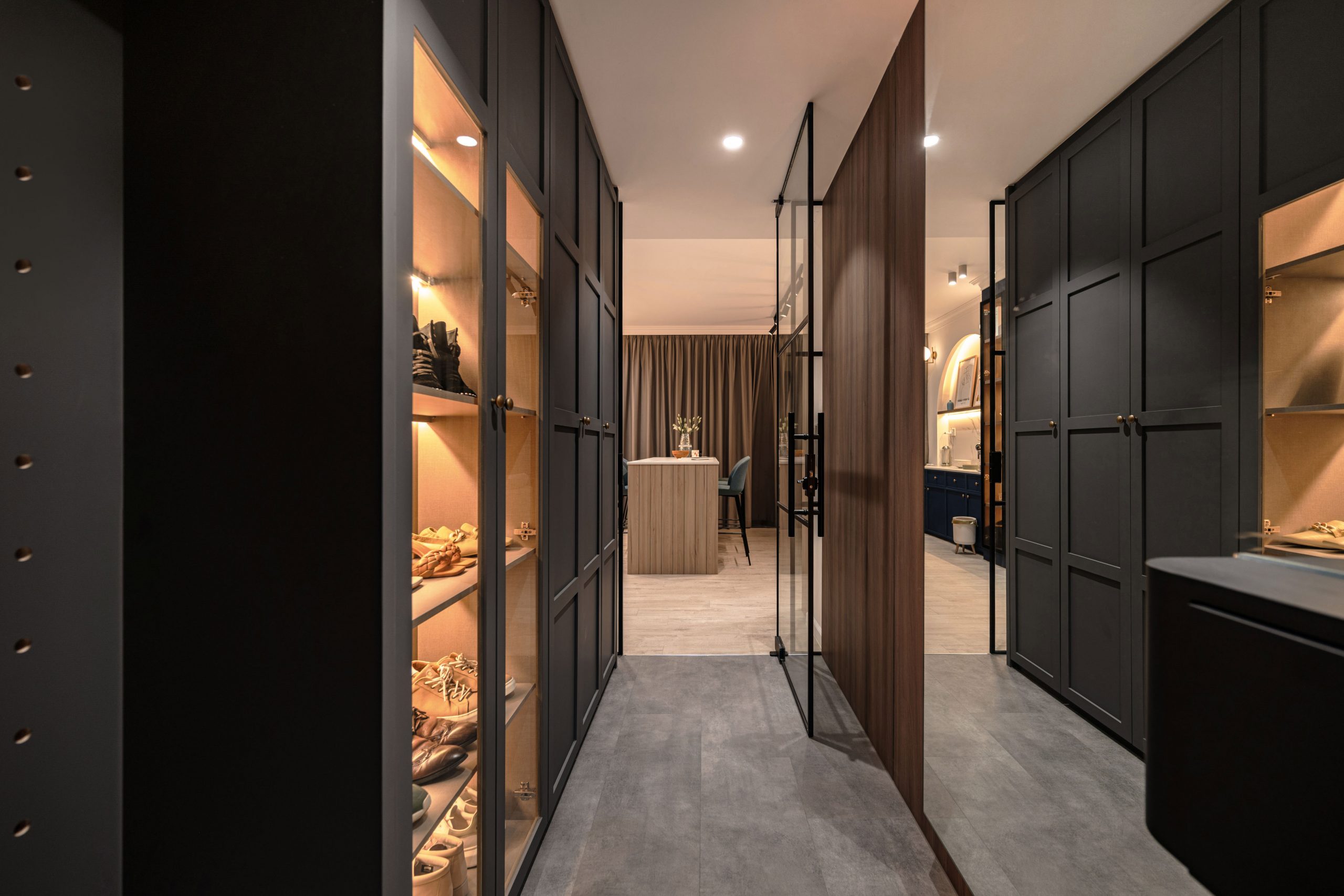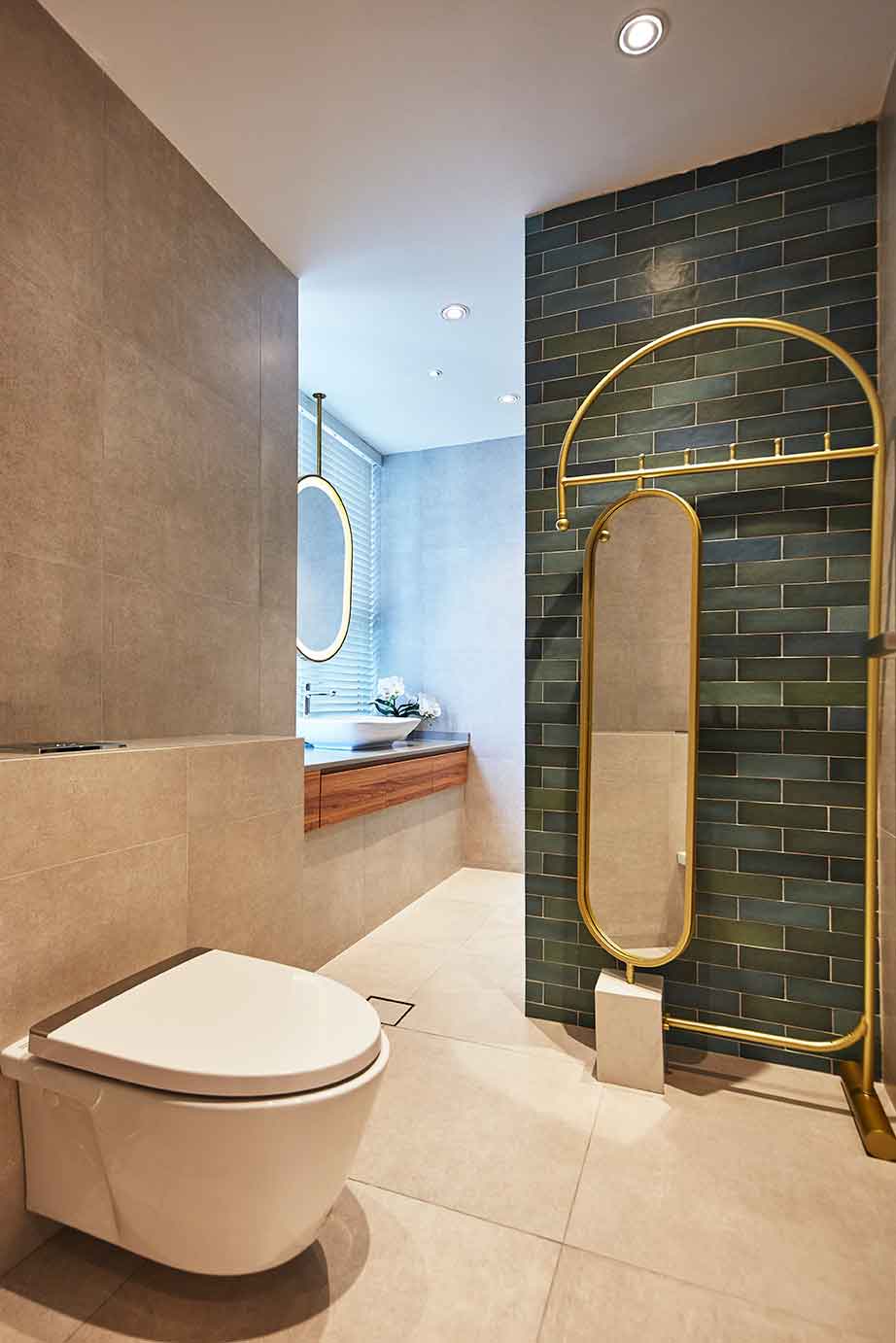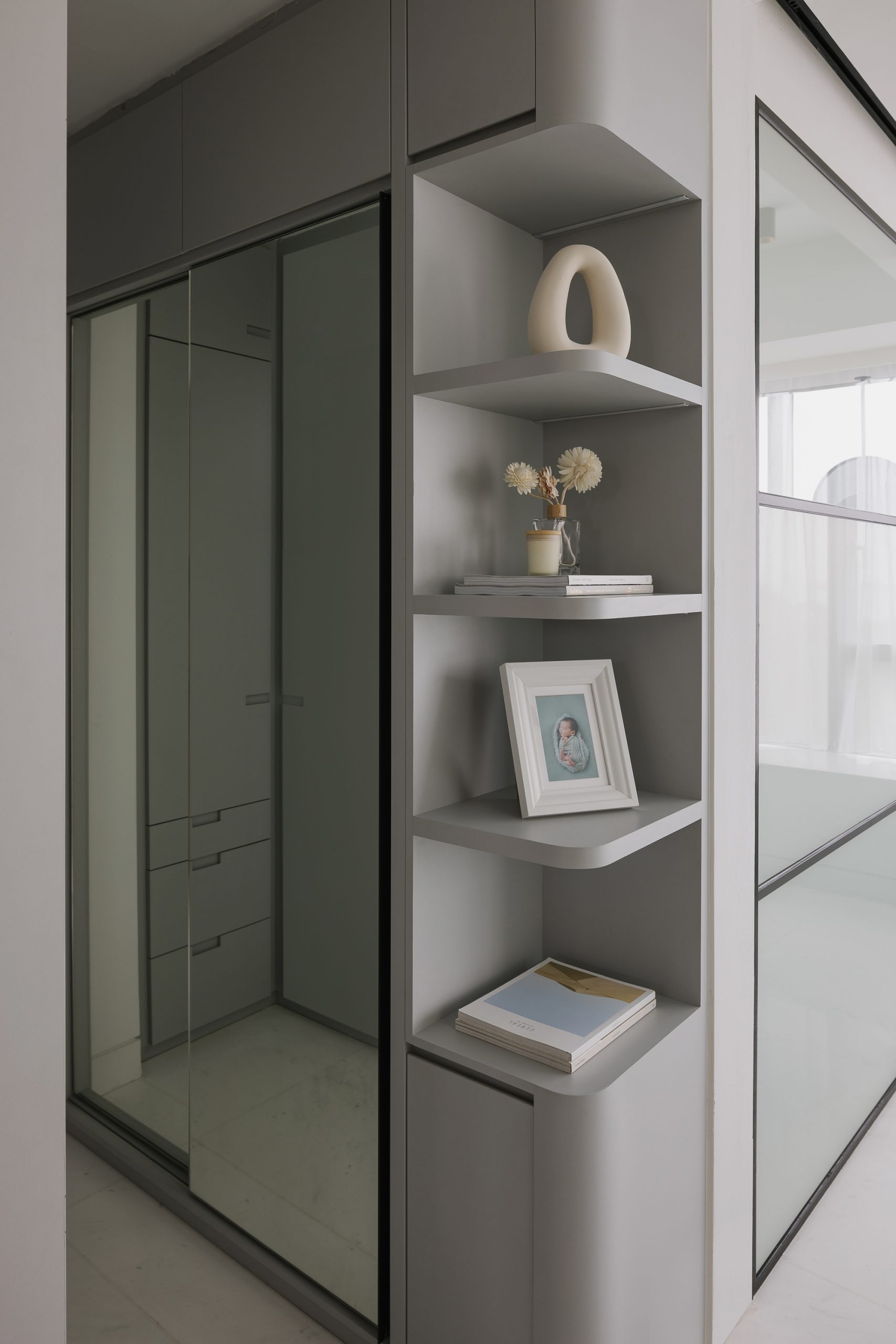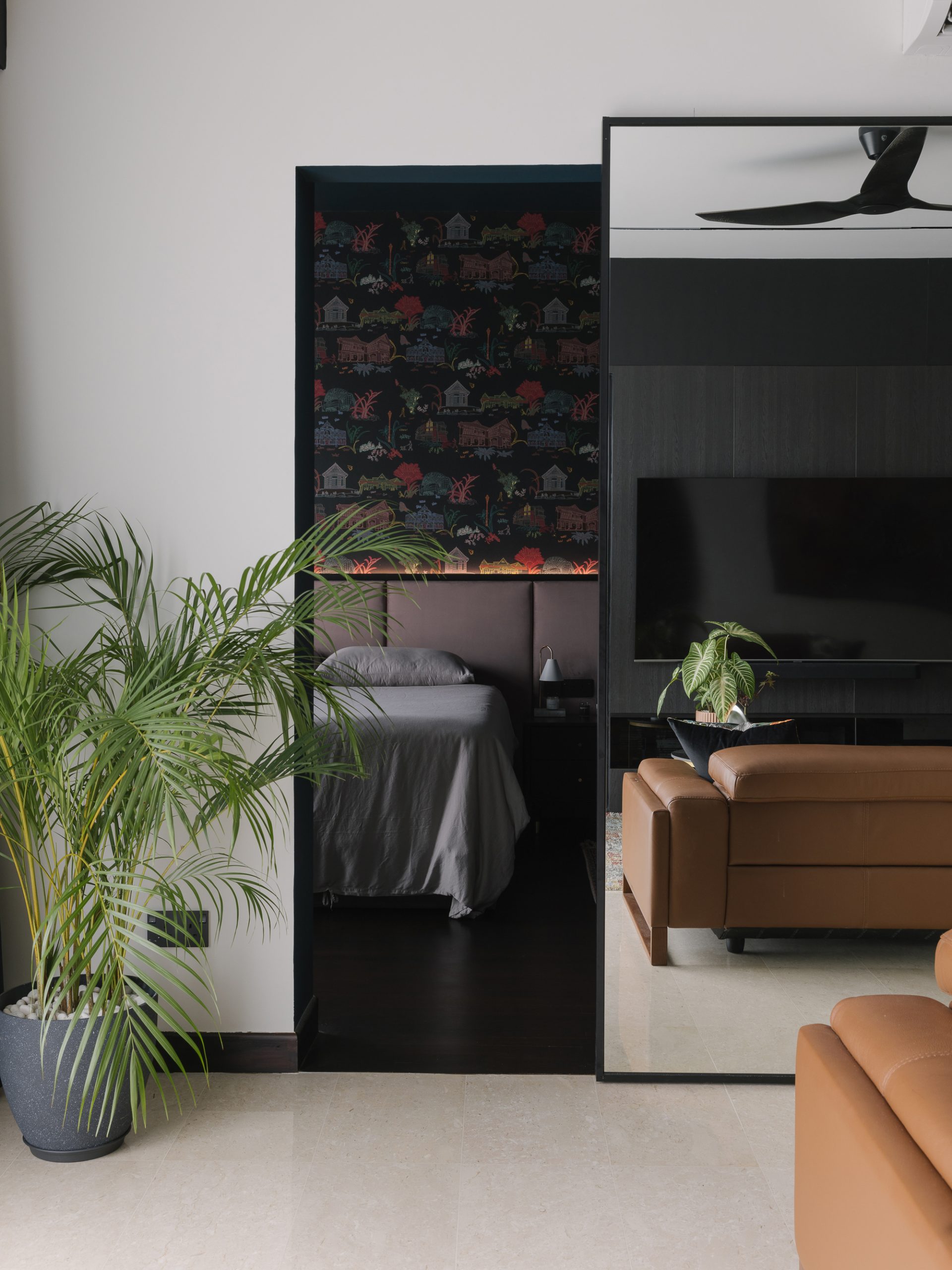Decorating Your Home Interior With Mirrors

A common feature in bathrooms and bedrooms, a mirror holds practical significance in these spaces. From brushing your teeth, to getting your hair or makeup done, or even to checking your outfit for the day, a mirror’s reflective function makes it almost an essential in every home.
From the interior design perspective, a mirror is so much more than that. Mirrors can be decorative elements that enhance your home interior, or even seemingly expand the size of a space visually. Yet, it must be done right to avoid ending up with visual clutter. Here are five ways you can use mirrors to elevate the interior of your home.
Visually Expand a Space with Mirrors
Majority of Singapore homeowners face the challenge of designing a small home, where any added element can easily result in a tighter space or unwanted clutter. A good way to counter this would be to place a floor-to-ceiling mirror in tight spaces. This condominium unit has it placed right at the foyer, giving the illusion of a spacious walkway double of its original width.

You can play around with the design of the mirror panels as well, instead of a single full length panel. This home has several slim panels over its foyer carpentry, reflecting and extending the dining island and kitchen zone that sits by the entryway. Arches are incorporated into the mirror design, which brings cohesion alongside the curves and organic shapes that pepper the home interior.

Using a Mirror to Fill Empty Walls
Plain white walls are an aesthetic, especially in minimalist interiors, but beyond a certain size or length, it may look empty. Consider placing a single wall mirror or a series of mirrors to fill the space. Do take note, however, of the interior style and composition of furnishing and décor before choosing mirrors, as all these as a whole can affect the overall look of your home interior.

Mirrors can also take the place of framed art to decorate your walls. Choose a frame that matches your home interior, whether in colour or in design. The gold detailing of this framed mirror makes for the perfect sitting area décor in this modern classic maisonette home.

Mirror as a Statement Piece
A unique or customised mirror can serve as a statement piece in your home decor. Instead of a full height mirror that spans the entire foyer wall or carpentry, this apartment went for a sleek, backlit wall mirror that seems almost like a full circle hugging a wall corner.

Be it wall mirrors or standing ones, unconventional mirrors can add character and definition to a space. In this home characterised by its unconventional blue hues, this gold framed standing mirror adds a touch of luxe to the master bathroom.

Brighten Your Home with Strategically Placed Mirrors
Mirrors reflect light and are able to brighten a space when placed in locations facing a light source. A common practice would be to place a mirror facing a window or balcony area to capture the natural light entering the space.

For darker themed homes, homeowners can opt for tinted mirrors in communal zones. This enables the mirror to seamlessly blend into the darker toned interior, while maintaining some level of reflectiveness.

Dual Function to Maximise Utility
For practical reasons, homeowners often place mirrors in bathrooms or dressing areas. Wall mounted or standing mirrors work well, of course, but mirrors on carpentry doors help to save space in small homes. Adding a mirror panel on or inside of a wardrobe door would mean no additional floor or wall space will need to be given up.

Mirror can also be used to hide certain areas or features in a space. For this home, the designer suggested a concealed doorway to the bedroom, hiding it from plain sight using a mirror that doubles as a sliding door.

The versatility of a mirror as an accessory to a home interior brings endless possibilities. Just do your research, find your style and have mirrors do the rest in enhancing your space!
CONSULT OUR DESIGNER
-
16 December 2025 DESIGN INSPIRATIONPRE-RENOVATIONTIPS & GUIDES
Low-Maintenance Interior Design Ideas For Busy Singaporeans
-
4 December 2025 TIPS & GUIDES
HDB Interior Design Rules You Might Be Breaking Without Knowing (And How to Fix Them)
-
4 December 2025 TIPS & GUIDES
Selecting an Interior Designer for Luxury Interior Design
-
4 December 2025 TIPS & GUIDES
6 Essential Functional Considerations in Renovation Interior Design You Don’t Want to Overlook
-
4 December 2025 TIPS & GUIDES
Top 10 Ways to Personalise a Templated Condo Interior Design
-
11 November 2025 TIPS & GUIDES
Future-Proofing Your Home: Designing for the Years Ahead

